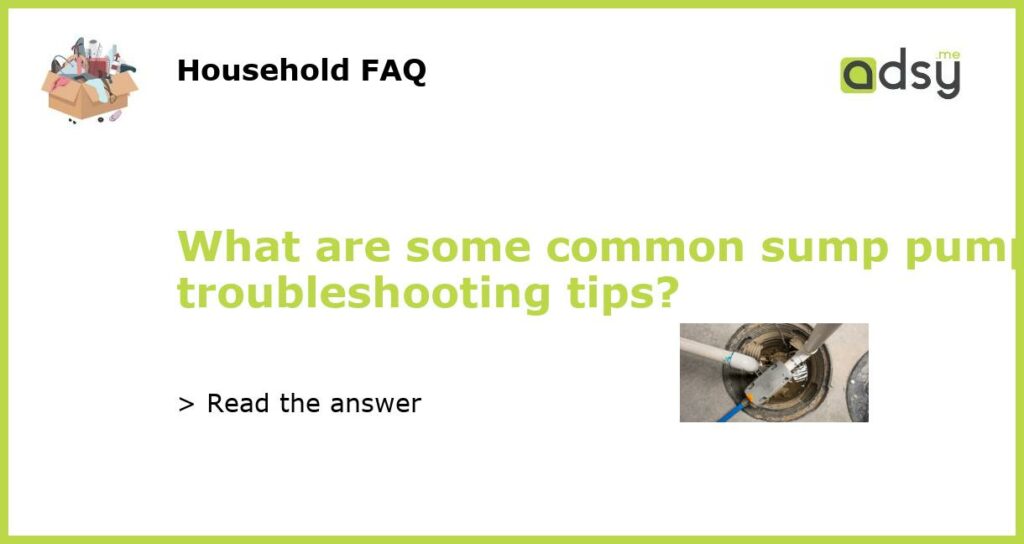Check the Power Source
One of the first things you should do when troubleshooting a sump pump is to check the power source. Ensure that the pump is plugged in and that the outlet is functioning properly. If the pump is not receiving power, try plugging it into a different outlet or checking the circuit breaker to see if it has tripped.
If the power source is working correctly and the pump still isn’t turning on, it may be time to call a professional for further inspection and repair.
Inspect the Float Switch
The float switch is a crucial component of a sump pump that helps determine when it should turn on and off. If the pump is not turning on, the float switch may be stuck or in the wrong position. Take a look inside the sump pump pit and check the float switch. Gently lift it to see if the pump activates. If it does, the float switch may need to be adjusted or replaced.
Clean the Pump and Pit
Over time, debris such as dirt, rocks, and debris can accumulate in the sump pump pit, causing the pump to clog or malfunction. It’s important to regularly clean the pump and the pit to prevent this from happening. Disconnect the pump from the power source, remove it from the pit, and clean out any debris that may be blocking the pump’s impeller or intake. Also, clean the pit itself to ensure that water can properly flow into it.
Test the Check Valve
The check valve is responsible for preventing water from flowing back into the sump pit after the pump has expelled it. If the check valve is not working correctly, water may come back into the pit, causing the pump to turn on and off frequently or not at all. To test the check valve, fill the pit with water and observe if water flows back into the pit after the pump has shut off. If it does, the check valve may need to be replaced.
Consider the Age and Condition of the Pump
If none of the troubleshooting tips mentioned above resolve the issue with your sump pump, it may be worth considering the age and overall condition of the pump itself. Sump pumps have a lifespan of about 10-15 years, and if your pump is reaching the end of its lifespan, it may be time to invest in a new one. Additionally, if the pump has been frequently used or has experienced significant wear and tear, it may be more cost-effective to replace it rather than trying to repair it.

